Calm irritated, inflamed tissues and trigger the healing process with these 9+ marshmallow benefits … plus easy-to-use recipes!
9+ Marshmallow Benefits: Healing Relief for the Gut, Lungs, Skin, and More
Marshmallow is a gentle, soothing plant with a tendency to calm irritated, inflamed tissues and facilitate the healing process. Marshmallow has a long history of medicinal and edible uses. While an exact timeline cannot be formed, its healing properties have been recognized at least as long ago as Homer wrote the Iliad.
However, marshmallow root health benefits were likely renown long before that. In fact, as a historical food, marshmallow has a possible reference as far back as the Old Testament book of Job, though this may depend on which translation you’re reading. Regardless, the plant is quite edible.
A Healing History
Marshmallow’s soothing properties were recognized by the taxonomists who named it. “Althaea” is from the Greek and means “to heal” or “healing power.” “Officinalis” is a commonly applied name for plants with a history of medicinal use. It refers specifically to a room in a monastery where medicinal plants were kept. It can be thought of as denoting an “official” healing plant.
Thus, both parts of its scientific name refer to marshmallow benefits. Marshmallow is “the official healing plant of healing.” In contrast, its family name, Malvaceae, also comes from a Greek word, “malake,” meaning “soft.” This is in reference to the mucilage common to marshmallow and other members of this family.
Marshmallow at a Glance
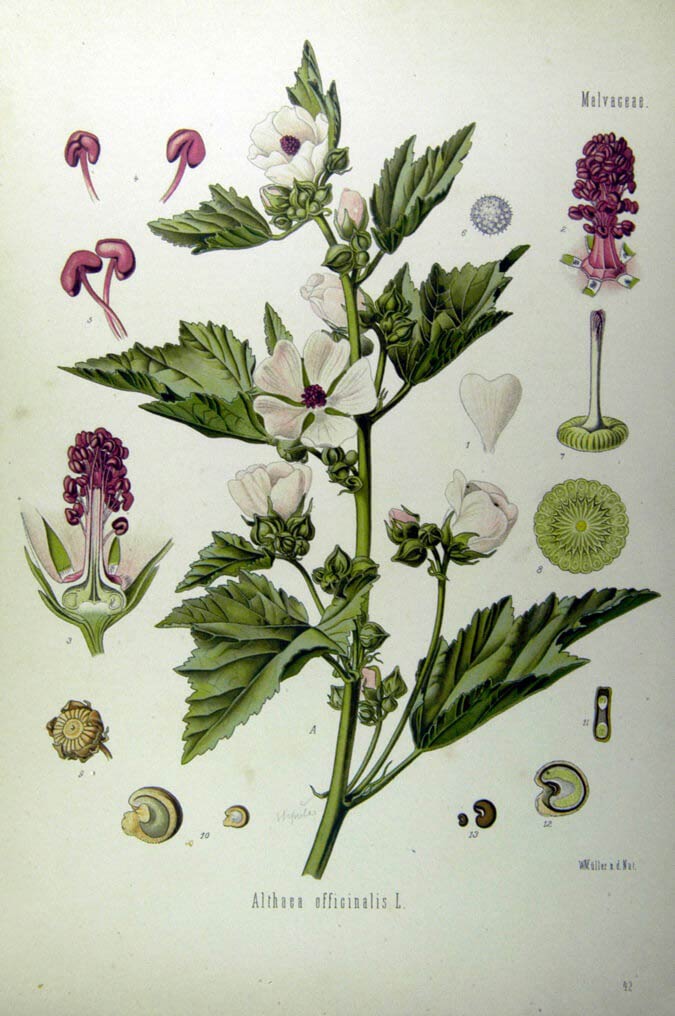
Public domain, via Wikimedia Commons
Botanical Name: Althaea officinalis
Family: Malvaceae
Other Common Names: Marsh mallow, marsh-mallow, cheese plant (cheeses)
Parts Used: Roots, flowers, leaves
Energetics: Moist
Thermal Properties: Cool
Actions: Anti-inflammatory, antibacterial, demulcent, diuretic, emollient, expectorant, immune modulating, nutritive, skin protectant, vulnerary
Taste: Sweet
Plant Uses: Burns, ulcers, irritable bowel diseases, respiratory infection, dry mouth, sore throat, skin health, general soothing anywhere in the body
Plant Preparations: Cold infusion, oil infusion, lip balms, moisturizer creams, cough syrup, lozenges, food
Toxicities/Warnings: Marshmallow is generally well-tolerated but can affect the absorption of other medications. Marshmallow can lower blood sugar.
Marshmallow Benefits the Whole Body
Calm Inflammation
Use as a demulcent to relieve irritated, inflamed tissues throughout the body.1)Forêt, Rosalee De La. “Marshmallow.” HerbMentor. Accessed July 09, 2019. https://herbmentor.learningherbs.com/herb/marshmallow/.
Help Urinary Health
Flush out UTI bacteria while lubricating and easing the passage of stones.2)Levy, Jillian. “Marshmallow Root: The Ultimate Gut and Lung Protector.” Dr. Axe. July 30, 2018. Accessed July 09, 2019. https://draxe.com/marshmallow-root/. Marshmallow benefits include a demulcent nature that has been noted to make the movement of stones less painful.
Quiet Coughs

Image by Anastasia Gepp from Pixabay
The respiratory system is another area where marshmallow root health benefits really shine. Its soothing and cooling nature makes it one of the primary herbs for quieting a dry, unproductive cough, relaxing spasmodic airways, and soothing a sore throat.3)Levy, Jillian. “Marshmallow Root: The Ultimate Gut and Lung Protector.” Dr. Axe. July 30, 2018. Accessed July 09, 2019. https://draxe.com/marshmallow-root/.4)Sendker, Jandirk, Ines Böker, Isabelle Lengers, Simone Brandt, Joachim Jose, Timo Stark, Thomas Hofmann, Careen Fink, Heba Abdel-Aziz, and Andreas Hensel. “Phytochemical Characterization of Low Molecular Weight Constituents from Marshmallow Roots (Althaea Officinalis) and Inhibiting Effects of the Aqueous Extract on Human Hyaluronidase-1.” Journal of Natural Products80, no. 2 (2017): 290-97. doi:10.1021/acs.jnatprod.6b00670.5)Forêt, Rosalee De La. “Marshmallow.” HerbMentor. Accessed July 09, 2019. https://herbmentor.learningherbs.com/herb/marshmallow/.6)Levy, Jillian. “Marshmallow Root: The Ultimate Gut and Lung Protector.” Dr. Axe. July 30, 2018. Accessed July 09, 2019. https://draxe.com/marshmallow-root/.7)Sendker, Jandirk, Ines Böker, Isabelle Lengers, Simone Brandt, Joachim Jose, Timo Stark, Thomas Hofmann, Careen Fink, Heba Abdel-Aziz, and Andreas Hensel. “Phytochemical Characterization of Low Molecular Weight Constituents from Marshmallow Roots (Althaea Officinalis) and Inhibiting Effects of the Aqueous Extract on Human Hyaluronidase-1.” Journal of Natural Products80, no. 2 (2017): 290-97. doi:10.1021/acs.jnatprod.6b00670.8)Fink, Careen, Mathpreias Schmidt, and Karin Kraft. “Marshmallow Root Extract for the Treatment of Irritative Cough: Two Surveys on Users View on Effectiveness and Tolerability.” Complementary Medicine Research 25, no. 5 (2018): 299-305. doi:10.1159/000489560. Marshmallow has even been shown to be more effective at reducing coughs than non-narcotic pharmaceuticals.9)Sutovska, M., G. Nosalova, S. Franova, and A. Kardosova. “The Antitussive Activity of Polysaccharides from Althaea Officinalis L., Var. Robusta, Arctium Kappa L., Var. Herkules, and Prunus Persica L., Batsch.” Bratislavske Lekarske Listy108, no. 2 (February 2007): 93-99. Accessed July 13, 2019.
Its mucilage coats and moisturizes the back of the throat while attacking bacterial invaders and marshaling the immune system. Marshmallow also tends to harmonize well with other herbal remedies—especially other anti-inflammatory and antibacterial herbs—to fight off respiratory infection.
Eliminate Toxins
Marshmallow benefits include its use as a purifying herb. It binds to toxins, improving the body’s ability to cleanse itself.10)Pedersen, Mark. Nutritional Herbology: A Reference Guide to Herbs. Warsaw, IN: Whitman Publications, 2010. Its role as a diuretic also aids in flushing out bacteria and stones in the urinary tract.
Speed Healing
Marshmallow helps irritated and injured tissues to relax—speeding the healing process—and has even been used to prevent gangrene.11)Pedersen, Mark. Nutritional Herbology: A Reference Guide to Herbs. Warsaw, IN: Whitman Publications, 2010.12)Levy, Jillian. “Marshmallow Root: The Ultimate Gut and Lung Protector.” Dr. Axe. July 30, 2018. Accessed July 09, 2019. https://draxe.com/marshmallow-root/.13)Rezaei, M., Z. Dadgar, A. Noori-Zadeh, SA Mesbah-Namin, I. Pakzad, and E. Davodian. “Evaluation of the Antibacterial Activity of the Althaea Officinalis L. Leaf Extract and Its Wound Healing Potency in the Rat Model of Excision Wound Creation.” Avicenna J Phytomed5, no. 2 (March/April 2015): 105-12. Accessed July 13, 2019.
Soothe Skin
Another of many marshmallow plant uses is its excellent ability to relieve and heal skin irritations and burns.14)Forêt, Rosalee De La. “Marshmallow.” HerbMentor. Accessed July 09, 2019. https://herbmentor.learningherbs.com/herb/marshmallow/. It can be applied directly to the skin to relieve the discomfort of burns, bites, stings, rashes, and other skin irritations/injuries. It coats the affected area—protecting it both from drying out and from other irritations—and works to reduce the heat and swelling of inflammation.15)Forêt, Rosalee De La. “Marshmallow.” HerbMentor. Accessed July 09, 2019. https://herbmentor.learningherbs.com/herb/marshmallow/.
Ease Digestion Issues
Marshmallow benefits are not limited to the skin. Coat and protect the digestive system with marshmallow’s mucilage. Relieve pain from heartburn, ulcers, and inflammatory bowel diseases.16)Forêt, Rosalee De La. “Marshmallow.” HerbMentor. Accessed July 09, 2019. https://herbmentor.learningherbs.com/herb/marshmallow/.17)Levy, Jillian. “Marshmallow Root: The Ultimate Gut and Lung Protector.” Dr. Axe. July 30, 2018. Accessed July 09, 2019. https://draxe.com/marshmallow-root/.

Image by Alicia Harper from Pixabay
Acid reflux also typically responds well to marshmallow. In all the digestive woes mentioned, the polysaccharides in the marshmallow do the bulk of the work—coating, protecting, and soothing damaged areas of the GI tract. While protecting damaged areas, marshmallow also works to speed healing.18)Rezaei, M., Z. Dadgar, A. Noori-Zadeh, SA Mesbah-Namin, I. Pakzad, and E. Davodian. “Evaluation of the Antibacterial Activity of the Althaea Officinalis L. Leaf Extract and Its Wound Healing Potency in the Rat Model of Excision Wound Creation.” Avicenna J Phytomed5, no. 2 (March/April 2015): 105-12. Accessed July 13, 2019. Its mucilage may also help to block the gaps in a leaky gut.19)Levy, Jillian. “Marshmallow Root: The Ultimate Gut and Lung Protector.” Dr. Axe. July 30, 2018. Accessed July 09, 2019. https://draxe.com/marshmallow-root/.
However, marshmallow alone may not be enough to completely remedy these conditions. A more holistic approach is needed to determine their causes.
Promote Immune Function
Marshmallow stimulates the immune system to attack invaders and has antibacterial properties of its own.20)Levy, Jillian. “Marshmallow Root: The Ultimate Gut and Lung Protector.” Dr. Axe. July 30, 2018. Accessed July 09, 2019. https://draxe.com/marshmallow-root/.21)Rezaei, M., Z. Dadgar, A. Noori-Zadeh, SA Mesbah-Namin, I. Pakzad, and E. Davodian. “Evaluation of the Antibacterial Activity of the Althaea Officinalis L. Leaf Extract and Its Wound Healing Potency in the Rat Model of Excision Wound Creation.” Avicenna J Phytomed5, no. 2 (March/April 2015): 105-12. Accessed July 13, 2019.
Keep Joints Flexible

Image by Sofie Zbořilová from Pixabay
Downgrade swelling and joint pain.22)Pedersen, Mark. Nutritional Herbology: A Reference Guide to Herbs. Warsaw, IN: Whitman Publications, 2010.23)Levy, Jillian. “Marshmallow Root: The Ultimate Gut and Lung Protector.” Dr. Axe. July 30, 2018. Accessed July 09, 2019. https://draxe.com/marshmallow-root/. Marshmallow’s diuretic effect helps to reduce joint swelling while its anti-inflammatory and lubricating nature helps the joints move easier and with less pain.
Plays Well With Others
Marshmallow cooperates well with other herbs to support overall health, especially other anti-inflammatories and antibacterials. It can act as a buffer for herbs that may be too stimulating on their own.24)Pedersen, Mark. Nutritional Herbology: A Reference Guide to Herbs. Warsaw, IN: Whitman Publications, 2010.25)Levy, Jillian. “Marshmallow Root: The Ultimate Gut and Lung Protector.” Dr. Axe. July 30, 2018. Accessed July 09, 2019. https://draxe.com/marshmallow-root/.
Medicinal Properties
Overall, marshmallow is an excellent herb for any hot, dry, inflamed area of the body. As equal parts healer and comforter, its main functions are to soothe, quiet, and let the body know that “everything is going to be all right.”
While marshmallow benefits are many, they primarily derive from its abundance of polysaccharides. These become slippery and slimy when mixed with water and have the ability to coat and protect tissues that they come into contact with. Polysaccharides can be seen in varying degrees in other members of the mallow family too, such as okra and hibiscus, and have a number of helpful effects.
You May Also Enjoy:
“Soothe a Sore Throat With Herbal Ice Cream”
Marshmallow is also antibacterial, fighting infection at the site.26)Rezaei, M., Z. Dadgar, A. Noori-Zadeh, SA Mesbah-Namin, I. Pakzad, and E. Davodian. “Evaluation of the Antibacterial Activity of the Althaea Officinalis L. Leaf Extract and Its Wound Healing Potency in the Rat Model of Excision Wound Creation.” Avicenna J Phytomed5, no. 2 (March/April 2015): 105-12. Accessed July 13, 2019. And it stimulates the immune system to eat away at invading microbes and foreign materials.27)Levy, Jillian. “Marshmallow Root: The Ultimate Gut and Lung Protector.” Dr. Axe. July 30, 2018. Accessed July 09, 2019. https://draxe.com/marshmallow-root/. As mentioned, marshmallow has even been used in the prevention of gangrene.28)Forêt, Rosalee De La. “Marshmallow.” HerbMentor. Accessed July 09, 2019. https://herbmentor.learningherbs.com/herb/marshmallow/.
Thus far, we’ve looked at marshmallow’s effects when it comes into direct contact with tissues. These are fairly straightforward. However, other cases are a bit more mysterious.
Marshmallow’s mucilage is not well-absorbed by the body. One would think that this would make it ineffective at soothing anything beyond the skin or digestive system. But this is not the case. Marshmallow is effective even on distant tissues and systems.
You May Also Enjoy:
“15 Natural Antibiotic Alternatives”
One theory is that marshmallow may stimulate a moistening effect throughout the body.29)Forêt, Rosalee De La. “Marshmallow.” HerbMentor. Accessed July 09, 2019. https://herbmentor.learningherbs.com/herb/marshmallow/. Whatever the cause, marshmallow’s soothing properties seem to be able to reach just about everywhere.
Nutritional Properties
Aside from being a medicinal plant, marshmallow is also a fine food. It (and related species) have been eaten in China, much of Europe, and just about everywhere else they have grown. Although the plant is no longer a staple, its namesake—the marshmallow—lives on in our modern foods. Unfortunately, modern marshmallows no longer contain the actual plant.
But marshmallow benefits aren’t just for dessert. They make it an excellent source of iron, magnesium, and selenium. It’s also a good source of chromium, fiber, and Vitamin C, and even has a respectable amount of protein, potassium, phosphorus, niacin, manganese, and calcium.
On the flip side, the actual amounts of nutrients absorbed through the digestion process may be slightly lower than the quantities listed in the table. This would be due to the mucilage coating creating a physical barrier to absorption. This doesn’t negate the nutritional benefit of marshmallow, but it could reduce its nutritive value somewhat.
Marshmallow Benefits: Preparation and Usage
Marshmallow is a very versatile herb, lending itself to a variety of preparations. It’s generally very safe and can be used as needed. For example, multiple cups of tea (cold infusion) may be consumed daily. For digestive distress, 6 g. per day, by any preparation method, may be effective.
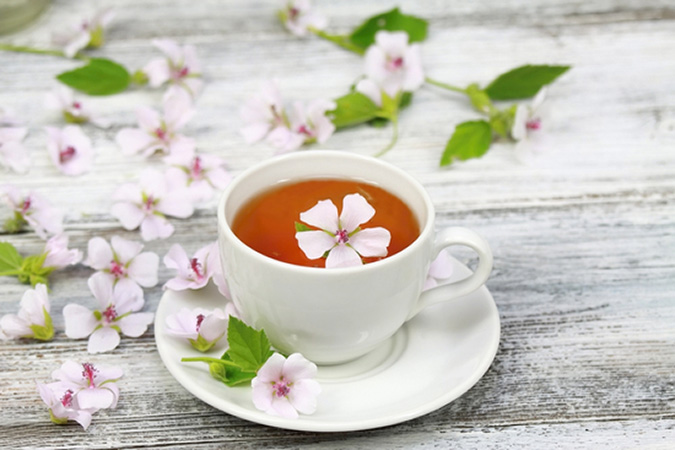
However, dosage will vary by person and condition. Topically, marshmallow may be used freely. Apply it directly to the affected area.
Marshmallow can be used medicinally with dogs and cats as it would be with people. The leaves and flowers are edible for humans and animals.
Cold Infusion
Fill a jar about a third of the way with dried marshmallow root. Then fill the rest of the jar with water. Let it sit overnight or for at least 4 hours. Strain, then sip the tea as needed.
It’s wonderful for those who wake up with dry mouth in the middle of the night. Just set a cup out on your nightstand, and take a sip as needed.
If you’re in a hurry, you can also make a hot infusion by pouring boiling water over the marshmallow root. However, this method is less effective at pulling out the healing mucilage and may produce a less pleasing texture.
Alcohol infusions are also possible, though they are less common. An alcohol concentration over 20% will break down the medicinal polysaccharides, diminishing their usefulness.
Cough Syrup
Adapted from WellnessMama.com
- 1 qt. water
- 1/4 c. ginger root powder
- 1/4 c. chamomile
- 1/4 c. marshmallow root
- 1 T. cinnamon
- 1/4 c. lemon juice
- 1 c. raw honey
Add water and herbs to a medium saucepan. Bring to a boil, then reduce to a simmer. Continue simmering until the volume is reduced by half. Remove from heat. Strain out the herbs, then add the lemon juice and honey, and stir.
Store your cough syrup in an airtight container in the refrigerator.
Lozenges
Many store-bought lozenges are basically candy. These marshmallow lozenges are more medicinal, though they won’t have the sugary flavor. If you miss that sweet taste, you can add licorice root to your marshmallow infusion.
- 1/4 c. (or just under) marshmallow infusion
- 2 T. raw honey
- 1/2 c. slippery elm bark powder
Pour your honey into a measuring cup, then add the marshmallow infusion up to the 1/4-cup mark and stir. Pour your slippery elm bark into a bowl, and pour the marshmallow/honey solution on top of this. Use your fingers to mix it all together until it becomes dough-like and you can form it into balls.
Break off pieces at your preferred size and roll them into balls. Set these out to dry for approximately 24 hours or until completely dry. Wrap each lozenge individually in wax paper, and store in a cool, dark place.
You May Also Enjoy:
Infused Oil
A marshmallow-infused oil is an excellent way to pair marshmallow benefits with another medicinal product in one soothing package. It also makes a good base for other herbal products. Coconut, olive, grape seed, jojoba, and sunflower are all popular oils for infusion.
To make an infused oil, fill a jar about 1/2 to 3/4 full with marshmallow root. Then pour oil over the herb until you fill the jar. Close the lid and shake it up. Place the jar in a brown paper bag, and fold over the top to protect it from direct sunlight.
Place the bag in a warm, sunny location for 2 weeks. You may now strain out the herbs and rebottle the oil. Store it in a cool, dark place. A refrigerator would be ideal.
Did You Know? “How to Make Herbal Sunscreen”
Infused oil can be rubbed directly onto your skin or hair and can be added to other herbal concoctions as well. Add it to moisturizer creams, herbal shampoos, natural sunscreens, or any number of other products.
Lip Balm
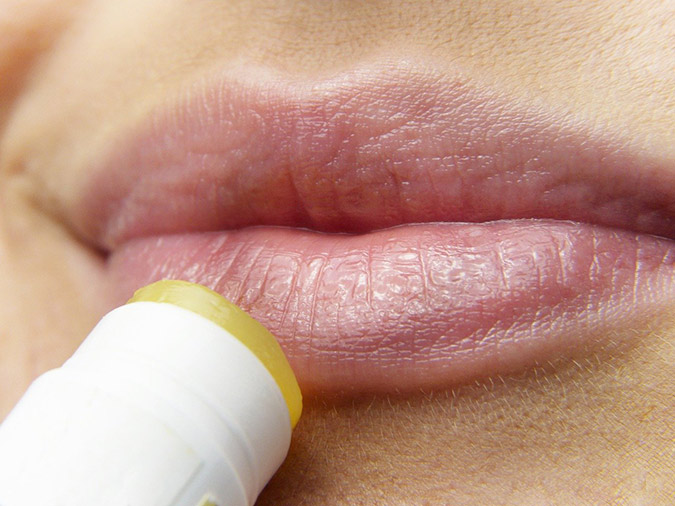
Image by silviarita from Pixabay
Adapted from Herbal Academy
- 3-1/2 T. marshmallow-infused coconut oil (or 1-1/2 T. coconut oil and 2 T. infused other oil)
- 1-1/2 T. beeswax pastilles
Add all of the ingredients to a double boiler, and heat over medium-low heat until everything is completely melted. Remove from heat and pour into metal tins or lip balm containers. You can use an oral syringe to fine tune your fill level. (Just know that you’ll probably never get the syringe clean again.)
Allow the lip balm to harden (and the container to cool) before closing the lid.
I should also mention that the beeswax residue will be difficult to remove from your double boiler. Having a spare double boiler, dedicated to herbal medicine, is a good strategy.
Homemade Marshmallows
If you’ve been curious about the connection between marshmallow “the plant” and marshmallow “the confection,” then this recipe is for you. Plus, you’ll be getting herbal marshmallow benefits without all the corn syrup and artificial ingredients of store-bought mallows.
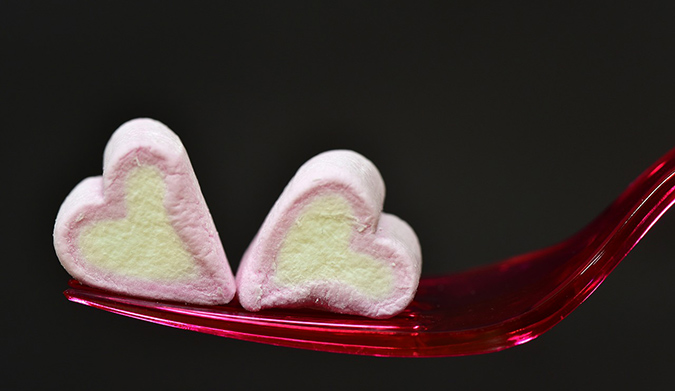
Image by Ulrike Leone from Pixabay
This recipe uses gelatin. It’s not a traditional ingredient, but it simplifies and speeds up the process tremendously, and it yields a superior mallow. If you’d like to experiment with a more historically faithful recipe, you can find one in Edible Wild Plants by John Kallus. But for now, let’s continue with the easier method.
- 1 T. marshmallow root powder
- 1 c. warm water
- 1/4 c. unflavored gelatin powder
- 1 c. honey
- 2 t. vanilla (or other creative flavoring)
Add marshmallow root powder and water to a mason jar, and close the lid. If your marshmallow root is more coarsely ground, you might want to add just a little extra water since you won’t be able to get 100% of the moisture back when you drain it later.
Shake it up really well to get the mixing process started. Then set it aside for 15 minutes to overnight. The longer it sets, the stronger the marshmallow flavor imparted. If you’d like a more medicinal mallow, you can use a cold infusion. (See instructions above.)
Strain the liquid, making sure that you have a whole cup. Pour half of the liquid into a bowl and add the gelatin. Use a whisk or hand mixer to incorporate the gelatin into the liquid, and set this aside.
You May Also Enjoy:
“Top 10 Immune Boosting Herbs (Free e-Book)”
Pour the other half of the liquid into a saucepan and add the honey. You can also add cocoa powder at this stage if you’d like to make chocolate marshmallows. Stir as you bring the mixture to a boil. Using a kitchen thermometer, bring the mixture to 240°F (115°C). Be careful that the mixture doesn’t bubble over.
Slowly pour this mixture into the bowl of gelatin and marshmallow liquid as you mix it on medium with your hand mixer. Gradually bring the mixer to high and beat for 10–15 minutes or until the mixture gains a stiff, marshmallow cream consistency. Add any desired flavorings toward the end of this process.
Grease a 9″x13″ baking dish with coconut oil, or line it with parchment paper. Pour the marshmallow mixture into the pan and smooth it down. Cover the dish and let it rest for 4 hours or overnight.
Then flip the dish onto a cutting board. (You may need to use a spatula to get it started.) Use an oiled pizza cutter or knife to cut the marshmallows into pieces according to the desired size. An optional dusting of powdered sugar (or a mixture of corn starch and powdered sugar) will keep the mallows from sticking to each other in a container.
Here is a video clip showing the process with chocolate marshmallows:
Precautions and Contraindications
If you are allergic to okra, you may also have an allergy to marshmallow. Use caution. Otherwise, marshmallow is a wonderfully safe herb that can be used by virtually everyone.
You should also be aware that marshmallow preparations can inhibit or slow down the absorption of medicines and other medicinal herbs. This is also true of other highly mucilaginous plants. Avoid taking marshmallow preparations for a few hours around other medications.
Diabetics and people taking medication to control blood sugar should monitor their glucose levels while taking marshmallow due to its ability to lower blood sugar. Marshmallow can also affect how well the body excretes lithium. People taking lithium should talk with their doctor to see if their dosage should be changed.
Plant ID
Marshmallow is a herbaceous perennial growing 2–4 ft. (0.6–1.2 m.) tall. The plant has multiple erect, hairy stems and soft, fuzzy, triangular leaves that are pleasant to the touch. The leaves have irregular, toothy margins and will often have 3 or 5 lobes.
The flowers have 5 white to very light pink petals and a pink to purple center. The fruit of the marshmallow is a circular arrangement of seed capsules that resembles a wheel of cheese. The roots are pale yellow, long, thick, and tapered.
Marshmallow has a similar appearance to many other plants in the Malvaceae family, and all mallow family members tend to be slimy when crushed. Be sure to carefully identify your species. Thankfully, this family is almost universally nontoxic, with nearly every member having something edible about it. The cotton plant is an exception.
Note that the garden flower Althaea (also known as Rose of Sharon) usually refers to Hibiscus syriacus. This is not the same plant as Althaea officinalis (marshmallow).
Where It Grows
As you might guess, a marshmallow is a mallow of the marsh. It prefers to grow in moist ground along riverbanks, coastal areas, salt marshes, and the sides of ditches. Marshmallow is not overly picky about soil or sunlight and can grow in Zones 3–9.
Marshmallow is native to Europe, northern Africa, and western Asia. It can also be found sporadically in North America and elsewhere across the globe where it has escaped cultivation, rarely becoming invasive.
You May Also Enjoy:
“10 Incredibly Powerful Antiviral Herbs”
“Oatstraw Benefits: Stress Reliever, Love Potion, Brain Booster, and More”
How and When to Harvest
To rack up maximum marshmallow benefits, harvest roots in the fall and winter. That’s when the polysaccharide content is highest. Ideally, you’ll choose a plant in its second or third year.
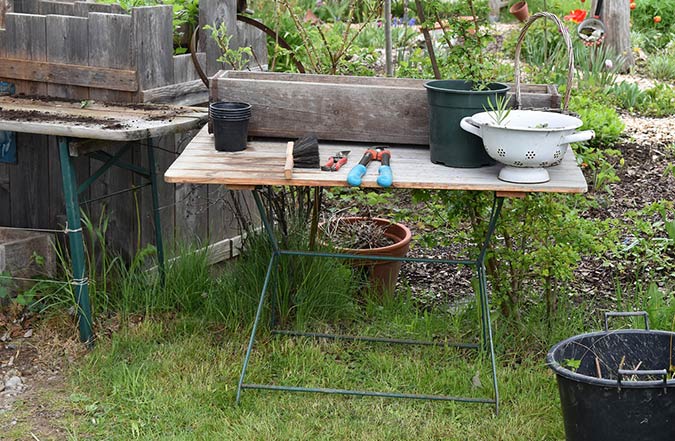
Image by JuttaKuehl from Pixabay
Younger plants may not have enough roots, and older ones may be woody. Either of these can be used, but are not ideal.
Cut up the roots while they are still fresh. If you let them dry out first, they will be harder to work with.
The leaves are best just before the plant goes into flower, usually in later summer or early fall. You may find it more convenient to cut the whole stem rather than pulling individual leaves off. If you only harvest the tops, leaving several inches of leaves below, the plant will recover and can offer future harvests. Flowers are harvested when they are blooming.
What Do You Think?
Marshmallow has a long history of medicinal and culinary uses, and modern medical science has finally realized the truth of this tradition. If you’ve tried this gentle soother and healer, tell us your favorite marshmallow benefits in the comments below! And let us know of other marshmallow plant uses (and recipes) you’ve come across.
_____________________
This is an updated version of an article that was originally published on January 4, 2020. The author may not currently be available to respond to comments; however, we encourage our Community members to chime in to share their experiences and answer questions!
Psst! Our Lawyer Wants You to Read This Big, Bad Medical Disclaimer –> The contents of this article, made available via The Grow Network (TGN), are for informational purposes only and do not constitute medical advice; the content is not intended to be a substitute for professional medical advice, diagnosis, or treatment. Always seek the advice of a qualified health care provider with any questions you may have regarding a medical condition. If you think you may be suffering from any medical condition, you should seek immediate medical attention. You should never delay seeking medical advice, disregard medical advice, or discontinue medical treatment because of information provided by TGN. Reliance on any information provided by this article is solely at your own risk. And, of course, never eat a wild plant without first checking with a local expert.
The Grow Network is a participant in the Amazon Services LLC Associates Program, an affiliate program designed to provide a means for our team to earn fees for recommending our favorite products! We may earn a small commission, at no additional cost to you, should you purchase an item after clicking one of our links. Thanks for supporting TGN!

Scott Sexton is a TGN Trailblazer, a highly experimental gardener, an unrelenting weed-eater, and a largely non-profit herbalist (much to his wife’s chagrin). When Scott is not teaching foraging classes, testing out theories in the garden, or grazing in the forest, he can be found at his Facebook page, “A Forager’s Guide to the Zombie Apocalypse.”
References
| ↑1, ↑5, ↑14, ↑15, ↑16, ↑28, ↑29 | Forêt, Rosalee De La. “Marshmallow.” HerbMentor. Accessed July 09, 2019. https://herbmentor.learningherbs.com/herb/marshmallow/. |
|---|---|
| ↑2, ↑3, ↑6, ↑12, ↑17, ↑19, ↑20, ↑23, ↑25, ↑27 | Levy, Jillian. “Marshmallow Root: The Ultimate Gut and Lung Protector.” Dr. Axe. July 30, 2018. Accessed July 09, 2019. https://draxe.com/marshmallow-root/. |
| ↑4, ↑7 | Sendker, Jandirk, Ines Böker, Isabelle Lengers, Simone Brandt, Joachim Jose, Timo Stark, Thomas Hofmann, Careen Fink, Heba Abdel-Aziz, and Andreas Hensel. “Phytochemical Characterization of Low Molecular Weight Constituents from Marshmallow Roots (Althaea Officinalis) and Inhibiting Effects of the Aqueous Extract on Human Hyaluronidase-1.” Journal of Natural Products80, no. 2 (2017): 290-97. doi:10.1021/acs.jnatprod.6b00670. |
| ↑8 | Fink, Careen, Mathpreias Schmidt, and Karin Kraft. “Marshmallow Root Extract for the Treatment of Irritative Cough: Two Surveys on Users View on Effectiveness and Tolerability.” Complementary Medicine Research 25, no. 5 (2018): 299-305. doi:10.1159/000489560. |
| ↑9 | Sutovska, M., G. Nosalova, S. Franova, and A. Kardosova. “The Antitussive Activity of Polysaccharides from Althaea Officinalis L., Var. Robusta, Arctium Kappa L., Var. Herkules, and Prunus Persica L., Batsch.” Bratislavske Lekarske Listy108, no. 2 (February 2007): 93-99. Accessed July 13, 2019. |
| ↑10, ↑11, ↑22, ↑24 | Pedersen, Mark. Nutritional Herbology: A Reference Guide to Herbs. Warsaw, IN: Whitman Publications, 2010. |
| ↑13, ↑18, ↑21, ↑26 | Rezaei, M., Z. Dadgar, A. Noori-Zadeh, SA Mesbah-Namin, I. Pakzad, and E. Davodian. “Evaluation of the Antibacterial Activity of the Althaea Officinalis L. Leaf Extract and Its Wound Healing Potency in the Rat Model of Excision Wound Creation.” Avicenna J Phytomed5, no. 2 (March/April 2015): 105-12. Accessed July 13, 2019. |
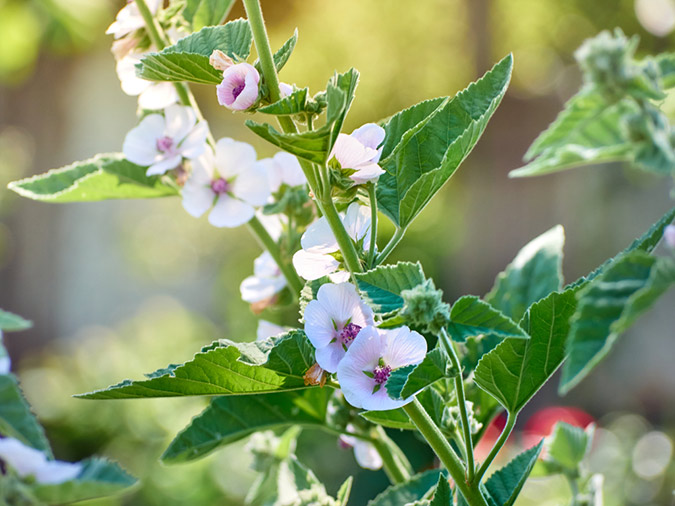
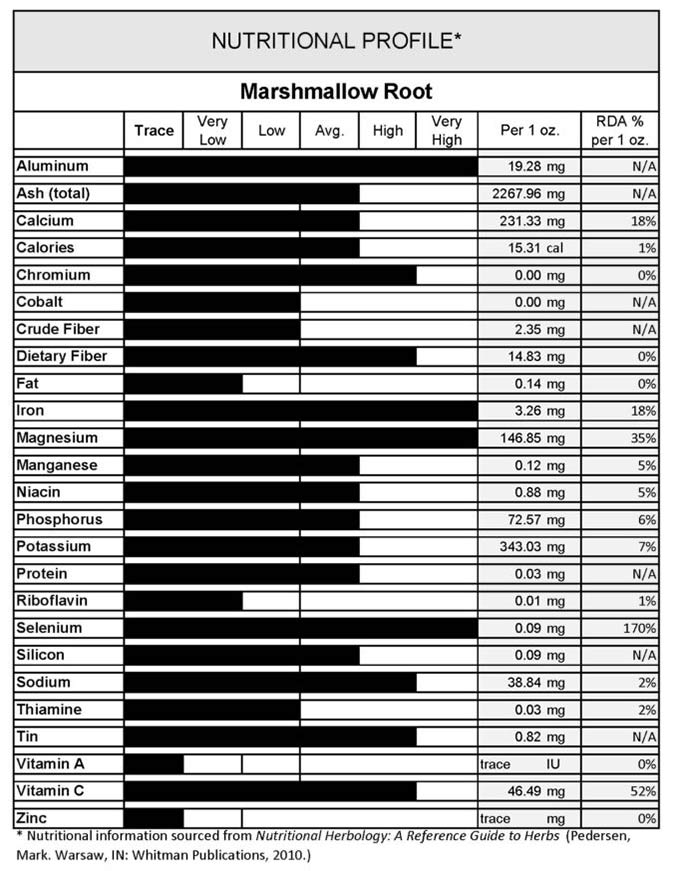
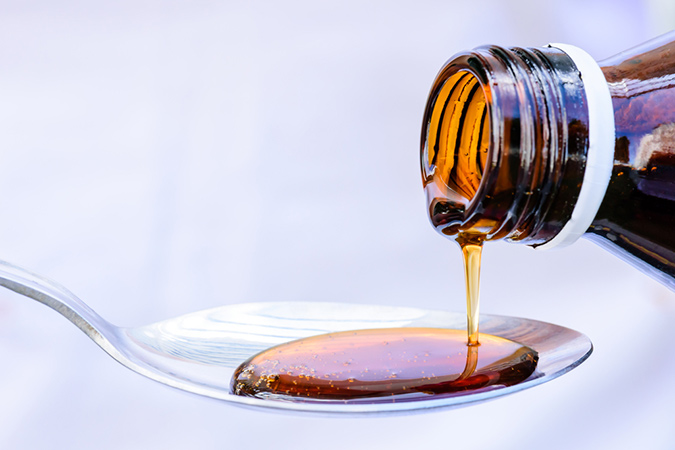
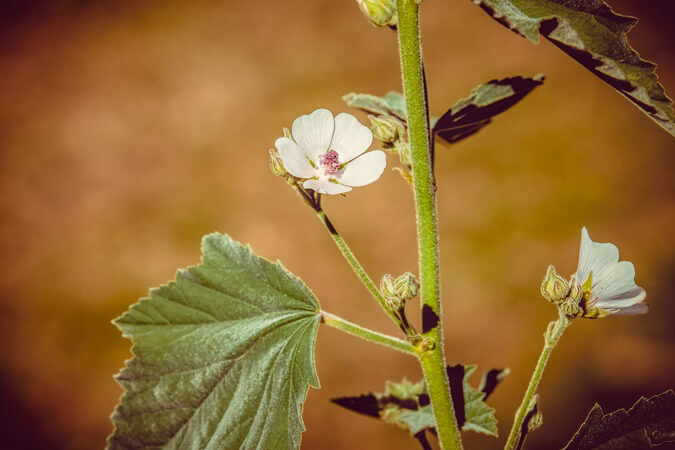







COMMENTS(6)
I definitely want to grow, harvest and use marshmallow this year! What a great plant!!
Good luck with the marshmallow growing!
Lots of great info in this article.
Thanks Torey. Glad you liked it.
Nice article, Scott! Marshamllow is a plant I am just now getting more aquainted with, though I have been growing it off and on for years.
It’s not the most immediately edible mallow, at leas its leaves; unlike smooth-leaved mallows like M. zebrina and common mallow, you can’t just pop a leaf in your mouth and start chewing, it is rather tough and hairy. To eat the leaves, you have to cook them. But the seed pods, when you get them at just the right time–before they have gone too far in the seed stage, are a lovely snack.
Hi Iris. I’ve never tried eating the seeds. I’ll be sure to give it a try. Thanks for the extra info!